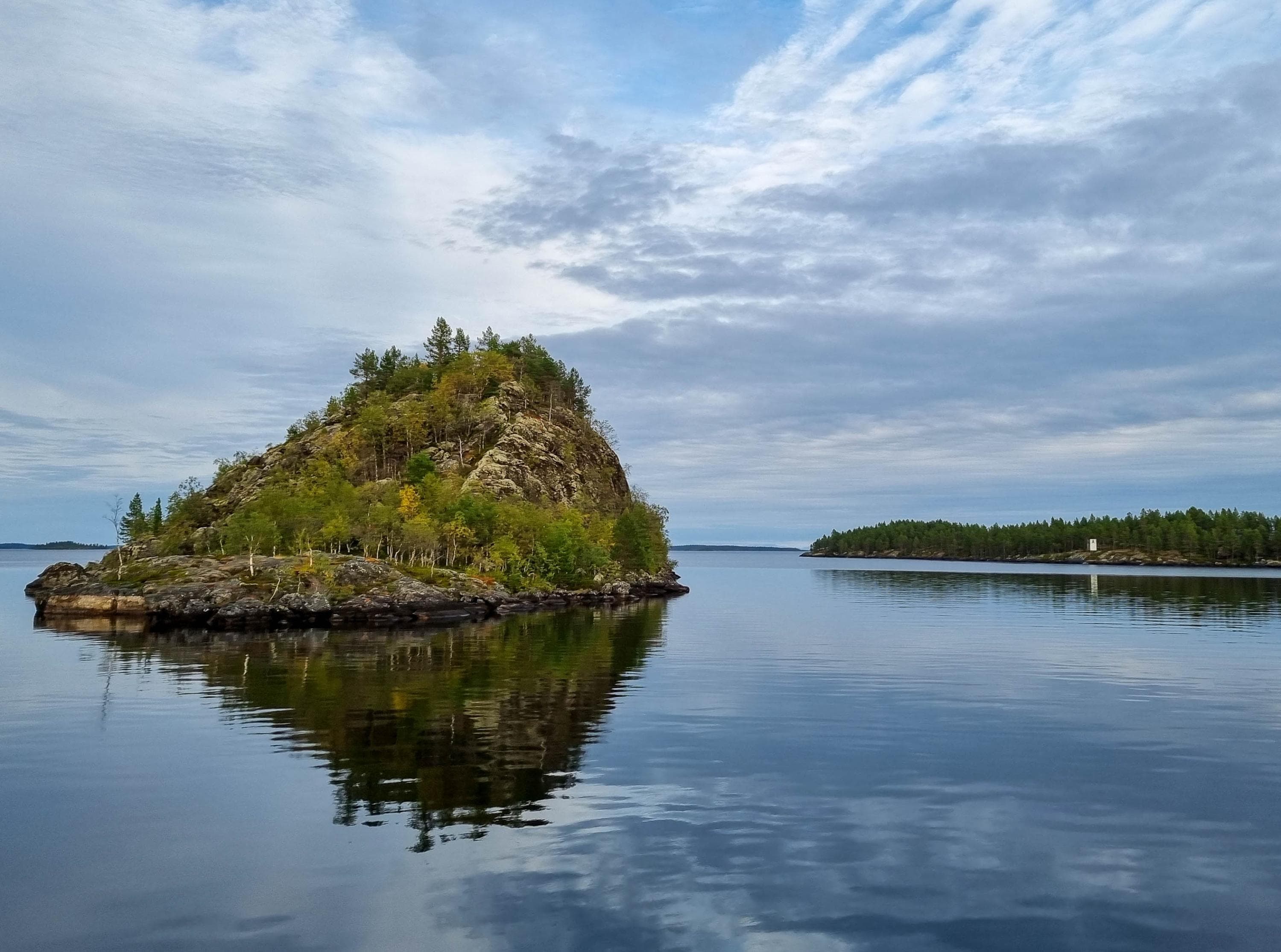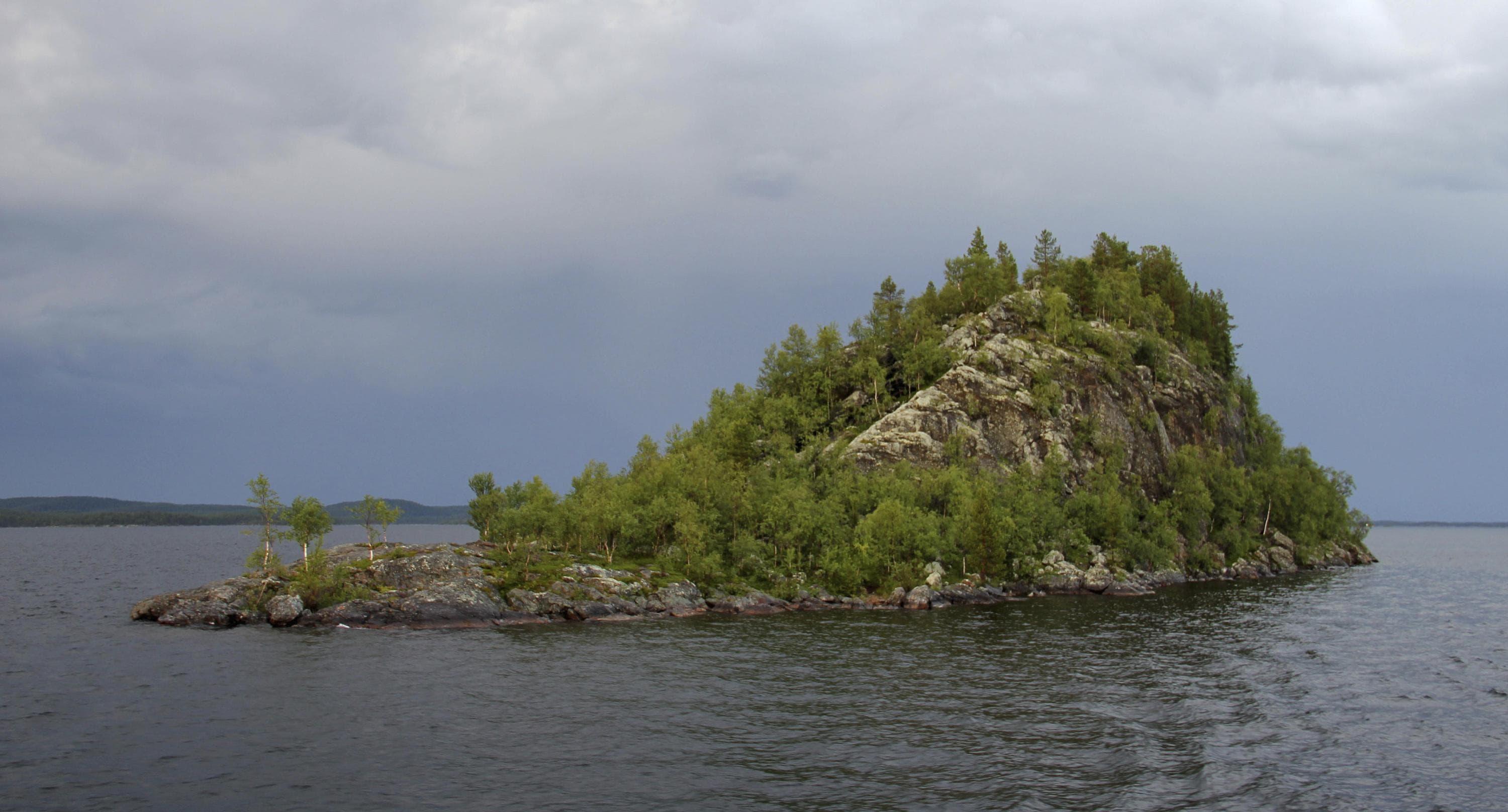Seidas as places of worship
In Sámi culture, sacred places are still part of Sámi identity and cultural heritage, which should be preserved for future generations. Christianity and the old ethnic religion coexisted for a long time in the Sámi area, although Christian missionary work sought to eradicate the old sacred places and associated customs.
Today, the protection of indigenous cultural heritage is considered important. The right of the Sámi to manage their own cultural heritage has been actively discussed in recent years. The Nature Conservation Act or the Antiquities Act do not prohibit visiting seitas or other Sámi sacred places, but those outside the Sámi community should consider whether to refrain from landing on, for example, Ukonsaari in Lake Inari. Ukonsaari, like many other sacred places, can be admired from afar without climbing on them.
Those outside the Sámi community should treat sacred places with respect. Visits should not leave any traces. Near seidas, it is good to stay on existing paths and not light fires, move stones, or dig in the soil. Signs of worship may be found at seidas, as someone may still find it important to interact with the seita today. However, those outside the Sámi culture should not leave anything at the seida
Seidas - The sacred sites of the Sámi people
Seidas are sacred to the Sámi and they must be approached with respect. It was believed that these places of worship are home to gods and spirits. Worship rituals and sacrifices were performed to ensure that the gods inhabiting the seidas would remain favourably disposed towards the worshipper.
Many of the seidas are natural formations of rock or wood, or they have been specifically built as places of worship using natural materials. Most of the seida rocks are natural stones of unusual shape or colour, and they act as landmarks that stand out from the surroundings.
Wooden seidas were usually located in wooded areas on the shores of lakes known as good fishing grounds. They were often made by cutting lower branches of trees or by placing a tree stump or a block of wood in a position that is easy to notice. Occasionally, human faces or other human features were carved in the wooden seidas.
Fells, hills, rock cliffs, distinctive ravines, islands and saivo lakes have also served as sacred sites. Lake Pakasaivo, Ailigas Fells in Utsjoki and the Ukonsaari Island in Lake Inarinjärvi are examples of such sites in Lapland.
Some of the seidas have been used by larger communities while others have been used by smaller groups, such as families. There are also seidas that have been used by a single individual. The location of a private seida may only have been known to a single person or one family. In other respects, too, using a seida as a place of worship is a very private affair.
Fishers, hunters and reindeer herders had their own places of worship. Fishing seidas were located along waterways while the seidas of hunters and reindeer herders were mostly located on fells and hills. There were also seidas where individuals went to ask for help for a wide variety of needs, regardless of their livelihood. The role of seidas often changed over time and as livelihoods evolved. People usually performed the rituals of worship at seidas close to their places of residence but such sites as the impressive Taatsi Seida in Kittilä also attracted worshippers from far away.
People also made offerings at seidas because it was known that the amount of catch also depended on the forces of nature. Such items as reindeer or deer antlers or fish fat were offered as sacrifices. The most significant sacrificial ceremonies were performed to coincide with the turning points of the annual cycle (midsummer and autumn) as well as the transitional rites of human life (such as childbirths). As a rule, only men were allowed to perform sacrificial rites but sacrificial sites used by women have also existed.

